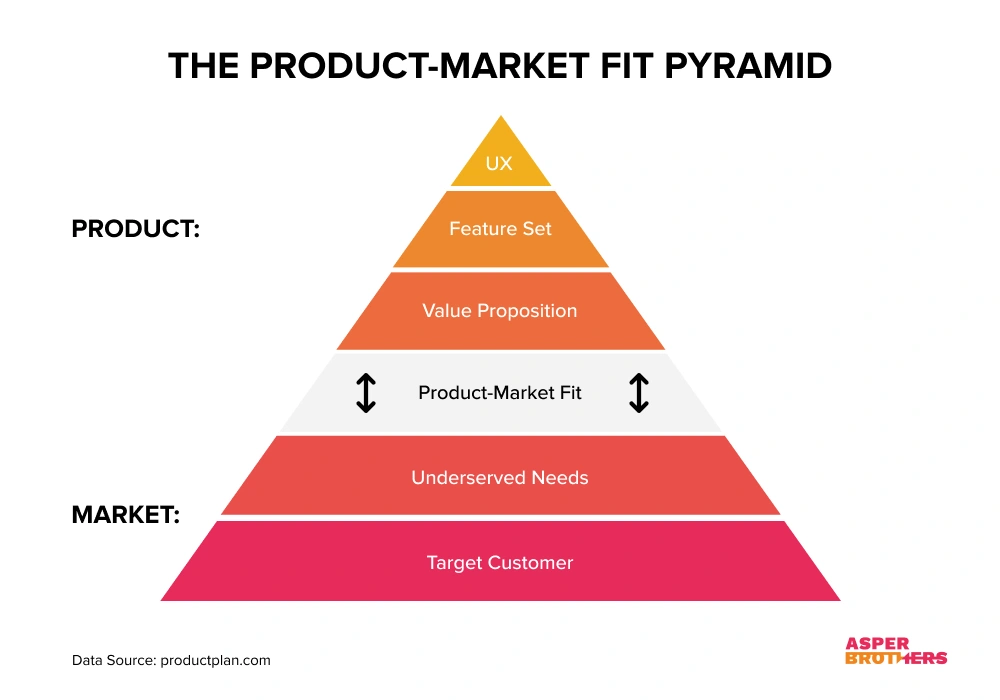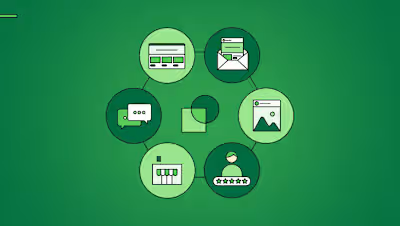Achieving Product-Market Fit for SaaS Companies

Product-Market Fit: What is it and How Can SaaS Companies Achieve it?
As the most important growth driver in a startup, product-market fit is the sole qualifier of which product succeeds and which fails.
7 min read
·
Jan 7, 2022
The No. 1 company killer is the lack of a great market, says Dan Olsen, author of The Lean Product Playbook.
Not great marketing, not hiring a great team, and, surprisingly, not by building a great product.
The market decides the level of success your product can attain and how fast your company can grow. When you find the right market, you’ll find the right people willing to pay for your product—without question.
Recognizing a good market from an early growth stage gives founders a sense of direction to uncover untapped pain points and come up with a product (or solution) that satisfies an unmet need.
When your market easily adopts your product—and customers spread the word — we say there is product-market fit.
Nowadays, companies mistake achieving product-market fit for other things, says Alex Schultz, VP of Growth at Facebook. For example, SaaS companies mistake a spike in the number of downloads as a product-market fit.
Other founders rely on the number of paying customers or marketing metrics as a quantifiable way to track product-market fit.
No wonder VCs and investors demand product-market fit evidence before investing in a company. The false facade of achieving a product-market fit on paper differs greatly from what it is.
In theory, achieving product-market fit is as easy as finding people (a market) with a pain point, creating the perfect solution to solve the pain, and selling the solution at a set price to create a scalable sales cycle.
In reality, it is different from that.
Achieving product-market fit requires research, trial and error, and testing to understand the market and ideal customer.
In this article, we will look at what leads to a product-market fit for your product, some expert insights, and how to recognize when your product has achieved a product-market fit.
But first…
What is Product-Market fit?
Product-market fit happens when there is an alignment between a customer's needs with paying power and the company’s product. Emphasis on the paying power because it determines whether a target market has the resources to — and is willing — to pay the pricing value of the product.
More than just a term in his article, The only thing that matters, Entrepreneur, Marc Andreessen, defines product-market fit as being in a good market with a product that can satisfy that market.
He further explains why identifying a great market is the most important differentiating factor between a failed startup and a successful one.
In the same light, Direct Response Kingpin, Gary Halbert, expressed the same opinion in the Boron letters, where he described finding the right market as recognizing a starving crowd. According to him, the most profitable habit a business owner can develop is recognizing a starving market capable of repeatedly buying from you.
What makes a product “fit” a market?
CEO of Vivino, Heini Zachariassen, highlighted three major components on which product-market fit depends:
The right pricing that a market is willing to pay for the product.
The core of the product and the pain points the problem is solving
The brand and marketing of the product
The alignment of these three factors determines the outcome of the product on the market.
How to tell if you have the right product-market fit as a SaaS business
Contrary to popular belief in SaaS, an increase in app downloads does not translate into a product-market fit. You have the right product-market fit when your market finds your products valuable enough to pay the price.
To help you determine if you have the right product-market fit, here are four questions to ask yourself:
Does your product address a clear and valuable customer need?
Are people willing to pay for your product?
Is there an increase in user engagement and referrals from customers?
Is your company recording an increase in revenue growth?
If you answered yes to all four, you are on the right path to achieving product-market fit.
What if you don’t hit product-market fit at the beginning?
In an interview, Jonathan Zachs of GoReminders revealed how they struggled to achieve product-market fit at an early stage.
Their targeted market already had a solution and was not ready to adopt a new one. The co-founders decided to market to random businesses and, in the process, discovered a broader market that received their solution quite well.
As a startup, the chances of achieving a product-market fit at an early stage are slim. Several things could go wrong: targeting the wrong market, putting out the wrong marketing, or adopting the wrong strategies.
Guido Bartolacci emphasizes that “finding product-market fit is not a one-time thing but a continuous process merged with the product growth and improvement.”
Take a look at this image.
Product-market fit is a transition throughout the product lifecycle, starting from the development stage. This means that with time the market for a product tends to change. With most startups, it is close to impossible to experience a spike in product-market fit because, at first:
The marketing sucks
The product sucks
They target a broad audience.
The customers don’t think the product is worth the price.
However, with improvements over time, companies can witness steady growth when people begin to see the value.
Product-Market fit framework for SaaS startups
Using the following framework will help you move closer to achieving product-market fit.
In this framework, there are several steps to rinse and repeat. But remember that times change, consumers change, and markets change.
Because product-market fit is a continuous event, six steps are adopted from the lean product playbook.
Who are you selling to?: Figure out who you are selling to by defining your ideal customer profile. The customer persona helps you decide who exactly you should be targeting. A lack of clarity would confuse you on who to target and the right messaging to reach the audience. To figure out who your ideal customer is, let’s adopt the iceberg framework.
The iceberg method works exactly like the image above.
When identifying the ideal customer profile (ICP), companies collect information about the age, gender, occupation, earnings, and online behaviors but overlook deeper characteristics like fears, values, dreams, habits, and feelings.
What unattended needs are you solving for your market?: What unattended needs does your customer currently have no solution to? And who is currently solving the problem to the satisfaction of your client? When developing a product, you must look towards addressing the unattended need of the customer that no one is solving.
Determine your unique selling advantage: The unique selling advantage or unique selling point dictates what differentiates you from the competitor. In a crowded market, thousands do the same thing and sell to the same customers, but the unique value proposition determines which one customer prefers.
How are you selling to the market: Your product must solve a real problem to get people excited about it. Finding a problem to solve is hard; getting people excited about your product is harder. People must see your product as valuable before adopting it and referring others. Your marketing also matters. The right audience will respond to the right marketing.
Test: Test, test, test. You don’t know the market type out there, so your best chance is to test everything: messaging, audience, and timing.
How do you test if a product has a product-market fit?
Conduct regular surveys for feedback.
Monitor the numbers
Keep up with the changing market.
Final Thoughts
Achieving product-market fit is the best way to grow a startup. Its importance can not be emphasized enough. By understanding the pain from the customer’s point of view, SAAS founders can develop better products and achieve product-market fit right from the ideation of the product.
When you understand the problem you wish to solve, you can easily recognize a market and start building a working solution as a product.
So, if your product is not bringing the desired revenue, consider doing a product-market analysis. Doing this will help you:
Determine if you are marketing to the right target audience, and
Reduce the wastage of limited marketing resources.
And don’t forget to test out new markets out there. There is an endless list of markets that could be a perfect fit for your product. It all comes down to testing.
Like this project
Posted May 28, 2025
Article on achieving product-market fit for SaaS companies.
Likes
1
Views
1
Timeline
Jan 2, 2022 - Jan 7, 2022





